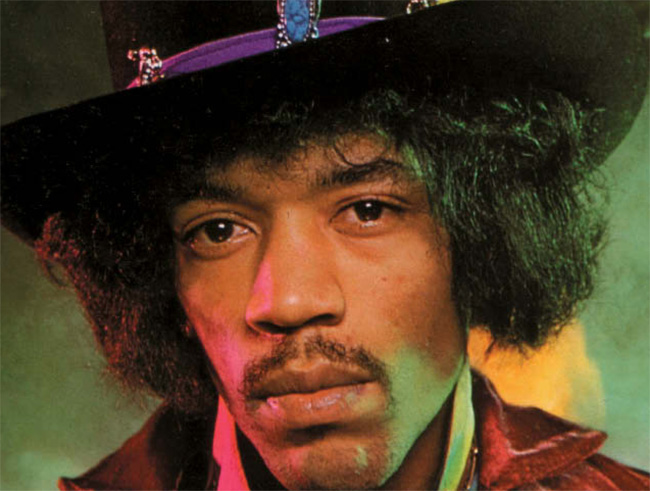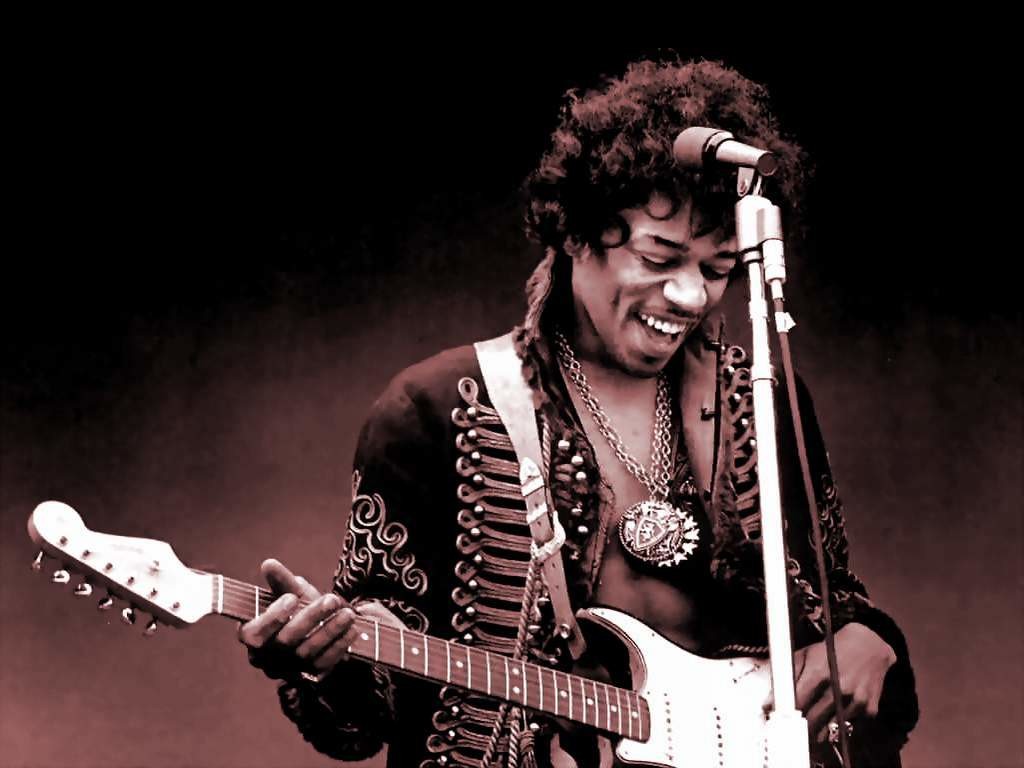JIMI HENDRIX
Hear a Great 4-Hour
Radio Documentary
on the Life & Music of
Jimi Hendrix:
Features Rare
Recordings & Interviews
The legacy of Jimi Hendrix’s estate has been in conflict in recent years. Since his father’s death in 2002, his siblings have squabbled over his money and battled unlicensed and bootleg venders. But Hendrix’s musical legacy continues to amaze and inspire, as Janie Hendrix—his stepsister and CEO of the company that manages his music—has released album after album of rarities over the last couple decades. Not all of these releases have pleased Hendrix fans, who have called some of them mercenary and thoughtless. But it is always a joy to discover an unheard recording, whether a live performance, wobbly studio outtake, or semi-polished demo, so many of which reveal the territory Hendrix intended to chart before he died.
In 1982, some of that unreleased material made it into a four-hour Pacifica Radiodocumentary, which you can hear in four parts here. Produced by what the station calls “some of Pacifica’s finest” at its Berkeley “flagship station 94.1 FM,” the documentary does an excellent job of placing these recordings in context. With help from Hendrix biographer David Henderson, the producers compiled “previously unheard and rare recordings” and interviews from Hendrix, his family, Noel Redding, Ornette Coleman, Stevie Wonder, John Lee Hooker, John McLaughlin, Chas Chandler, and more. After a newly-recorded introduction and a collage of Hendrix interview soundbites, Part 1 gets right down to it with a live version of “Are You Experienced?” that pulses from the speakers in hypnotic waves (listen to it on a solid pair of headphones if you can).
“I want to have stereo where the sound goes up,” says Hendrix in a soundbite, “and behind and underneath, you know? But all you can get now is across and across.” Somehow, even in ordinary stereo, Hendrix had a way of making sound surround his listeners, enveloping them in warm fuzzy waves of feedback and reverb. But he also had an equally captivating way with language, and not only in his song lyrics. Though the received portrait of Hendrix is of a shy, retiring person who expressed himself better with music, in many of these interviews he weaves together detailed memories and whimsical dreams and fantasies, composing imaginative narratives on the spot. Several extemporaneous lines could have easily flowered into new songs.
Hendrix briefly tells the story of his rise through the R&B and soul circuit as an almost effortless glide from the ranks of struggling sidemen, to playing behind Sam Cooke, Little Richard, and Ike and Tina Turner to starting his solo career. We move through the most famous stages of Hendrix’s life, with its iconic moments and cautionary tales, and by the time we get to Part 4, we start hearing a Hendrix most people never do, a preview of where his music might have gone into the seventies—with jazzy progressions and long, winding instrumental passages powered by the shuffling beats of Buddy Miles.
As has become abundantly clear in the almost four decades since Hendrix’s death, he had a tremendous amount of new music left in him, stretching in directions he never got to pursue. But the bit of it he left behind offers proof of just how influential he was not only on rock guitarists but also on blues and jazz fusion players of the following decade. His pioneering recording style (best heard on Electric Ladyland) also drove forward, and in some cases invented, many of the studio techniques in use today. Processes that can now be automated in minutes might took hours to orchestrate in the late sixties. Watching Hendrix mix in the studio “was like watching a ballet,” says producer Elliot Mazer.
This documentary keeps its focus squarely on Hendrix’s work, phenomenal talent, and uniquely innovative creative thought, and as such it provides the perfect setting for the rare and then-unreleased recordings you may not have heard before. Pacifica re-released the documentary last year as part of its annual fundraising campaign. The station is again soliciting funds to help maintain its impressive archives and digitize many more hours of tape like the Hendrix program, so stop by and make a donation if you can.
Related Content:
Jimi Hendrix’s Final Interview on September 11, 1970: Listen to the Complete Audio
+++++++++++
Josh Jones is a writer and musician based in Durham, NC. Follow him at @jdmagness


